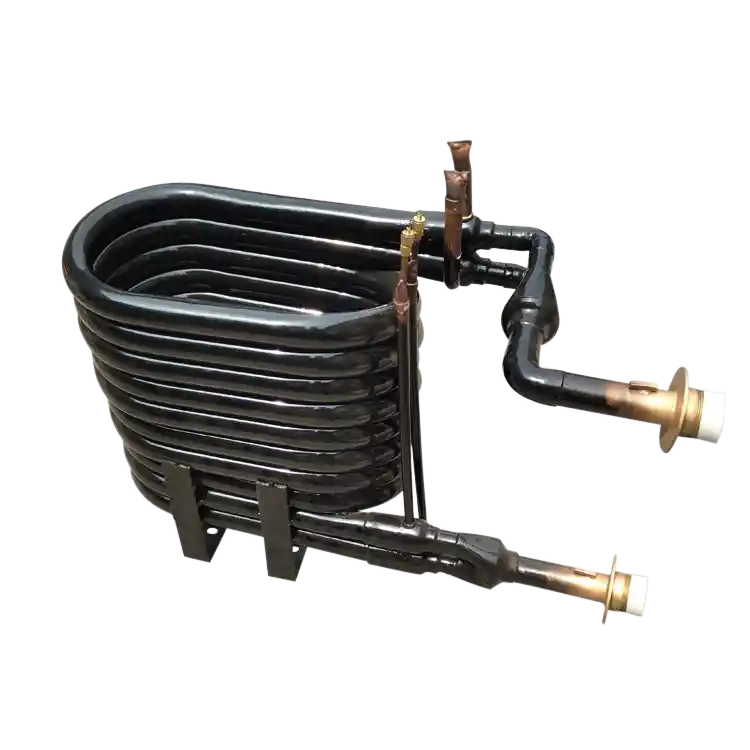Introduction
The assembly of inner and outer tubes is a critical step in the production process of coaxial heat exchangers. This article delves into the significance of inner and outer tube assembly and its impact on the overall performance and efficiency of coaxial heat exchangers. We will explore the key processes involved in inner and outer tube assembly, highlighting the importance of precise techniques, proper materials, and considerations to ensure seamless integration and optimal functionality of coaxial heat exchangers.
1. Importance of Inner and Outer Tube Assembly
The assembly of inner and outer tubes plays a crucial role in determining the performance and effectiveness of coaxial heat exchangers. This section explains the significance of precise assembly techniques and proper integration of inner and outer tubes.
1.1 Heat Transfer Efficiency
The proper assembly of inner and outer tubes directly influences heat transfer efficiency in coaxial heat exchangers. A well-assembled system ensures maximum contact between the inner and outer tubes, facilitating efficient heat exchange and minimizing energy loss.
1.2 Structural Integrity
Precise assembly techniques and secure integration of inner and outer tubes contribute to the structural integrity of coaxial heat exchangers. This ensures the device can withstand operational stresses, pressure differentials, and external forces, leading to enhanced reliability and durability.
1.3 Leak Prevention
Effective inner and outer tube assembly techniques help prevent leaks in the heat exchanger system. A securely assembled heat exchanger eliminates the risk of fluid leakage, ensuring efficient operation and reducing the potential for system inefficiencies or safety hazards.
2. Inner and Outer Tube Assembly Process
The assembly process of inner and outer tubes involves several crucial steps, including preparation, alignment, fixation, and sealing. This section provides an in-depth overview of the assembly process for coaxial heat exchangers.
2.1 Tube Preparation
Prior to assembly, thorough preparation of the inner and outer tubes is essential. This may involve cleaning, deburring, and ensuring dimensional accuracy and surface quality. Proper tube preparation ensures optimal fit and compatibility during assembly.
2.2 Alignment
Accurate alignment of the inner and outer tubes is a critical step in the assembly process. Precise alignment ensures the concentricity of the tubes, facilitating efficient heat transfer and minimizing thermal resistance. Specialized alignment tools and techniques, such as mandrels or jigs, may be employed to achieve precise alignment.
2.3 Fixation Methods
Various methods can be used to securely fix the inner and outer tubes in place. These methods include welding, brazing, mechanical fastening, or adhesive bonding. The selection of the fixation method depends on factors such as the materials used, manufacturing requirements, and performance expectations.
2.4 Sealing
Sealing is an integral part of the assembly process to ensure the integrity of the heat exchanger system. Proper sealing techniques and materials are employed to prevent leaks and maintain the separation of fluid streams. Sealants, gaskets, or O-rings are commonly used to achieve reliable and durable seals between the inner and outer tubes.
3. Considerations for Inner and Outer Tube Assembly
Several considerations should be taken into account during the inner and outer tube assembly process to ensure optimal performance and reliability. This section highlights key factors that manufacturers should consider.
3.1 Material Compatibility
Compatibility between the inner and outer tube materials is crucial to prevent material degradation, corrosion, or galvanic coupling. It is important to select materials that have compatible thermal expansion coefficients and exhibit good resistance to the operating conditions of the heat exchanger.
3.2 Joint Strength and Durability
The strength and durability of the joint between the inner and outer tubes are essential for long-term performance. The choice of fixation method should provide sufficient joint strength to withstand operational stresses and temperature differentials while maintaining structural integrity.
3.3 Manufacturing Tolerances
Strict adherence to manufacturing tolerances is vital during the assembly process. Deviations from specified tolerances can result in misalignment, compromised sealing, or reduced heat transfer efficiency. Close attention should be given to dimensional accuracy and tolerances to ensure proper assembly and functionality.
3.4 Quality Control
Implementing robust quality control measures is essential to verify the integrity of the inner and outer tube assembly. Regular inspections, leak testing, and quality assurance protocols should be employed to identify any defects or deviations and take corrective actions promptly.
4. Comparative Analysis of Fixation Methods
Different fixation methods offer varying benefits and considerations. This section presents a comparative analysis of common fixation methods used in the assembly of coaxial heat exchangers, highlighting their strengths, limitations, and suitable applications.
| Fixation Method | Strengths | Limitations | Suitable Applications |
|---|---|---|---|
| Welding | Strong joint, excellent durability | Limited to compatible materials, potential distortion of tubes | Heavy-duty heat exchangers in industrial applications |
| Brazing | High joint strength, good heat transfer, and corrosion resistance | Requires high temperatures and specialized equipment | High-performance heat exchangers in demanding applications |
| Mechanical | Easy installation and disassembly, suitable for maintenance | Relies on mechanical fasteners, potential for joint loosening | Heat exchangers with regular maintenance requirements |
| Adhesive Bonding | No heat-affected zone, suitable for dissimilar materials | Relatively lower joint strength compared to welding or brazing | Residential and light commercial heat exchangers |
Conclusion
The assembly of inner and outer tubes is a critical stage in the production process of coaxial heat exchangers. By employing precise assembly techniques, considering material compatibility, and implementing rigorous quality control measures, manufacturers can ensure seamless integration, optimal heat transfer efficiency, and reliable operation of coaxial heat exchangers. Additionally, the selection of appropriate fixation methods based on specific requirements enhances overall performance and longevity. A well-executed inner and outer tube assembly process is crucial for achieving the desired efficiency and functionality of coaxial heat exchangers in various applications.


